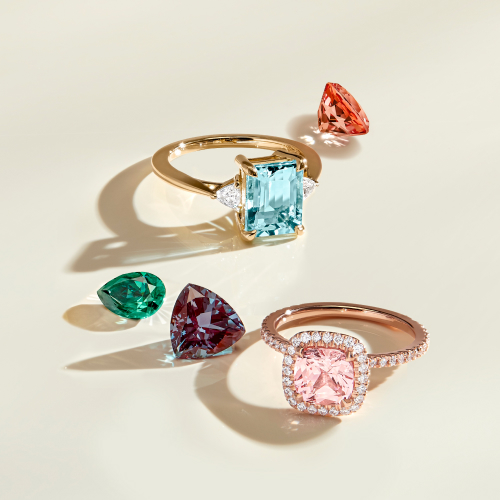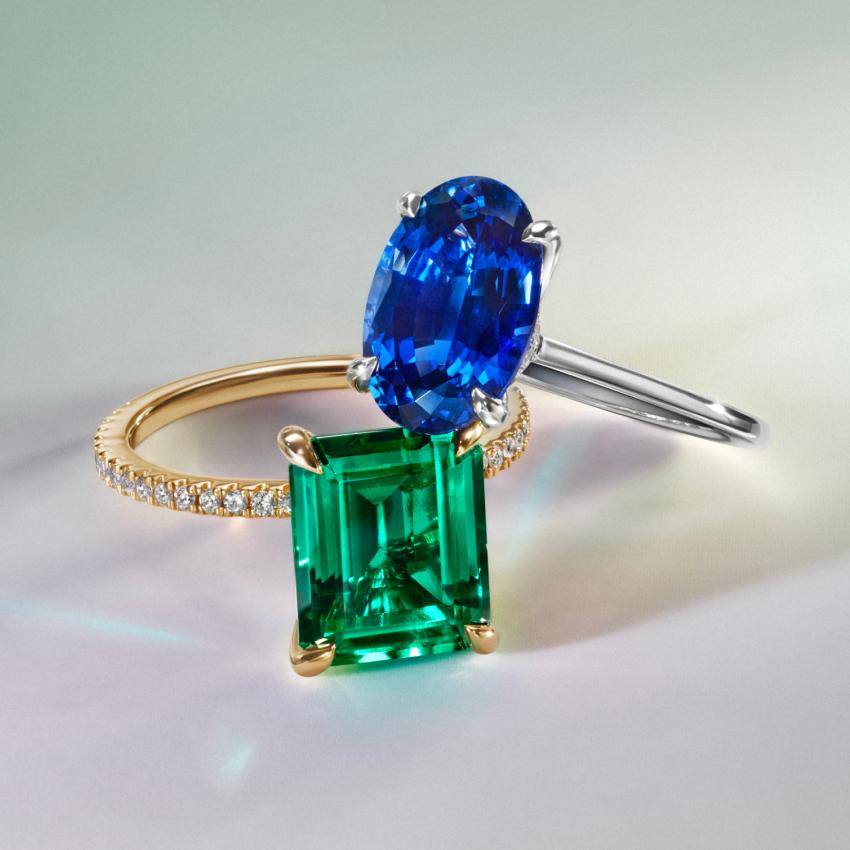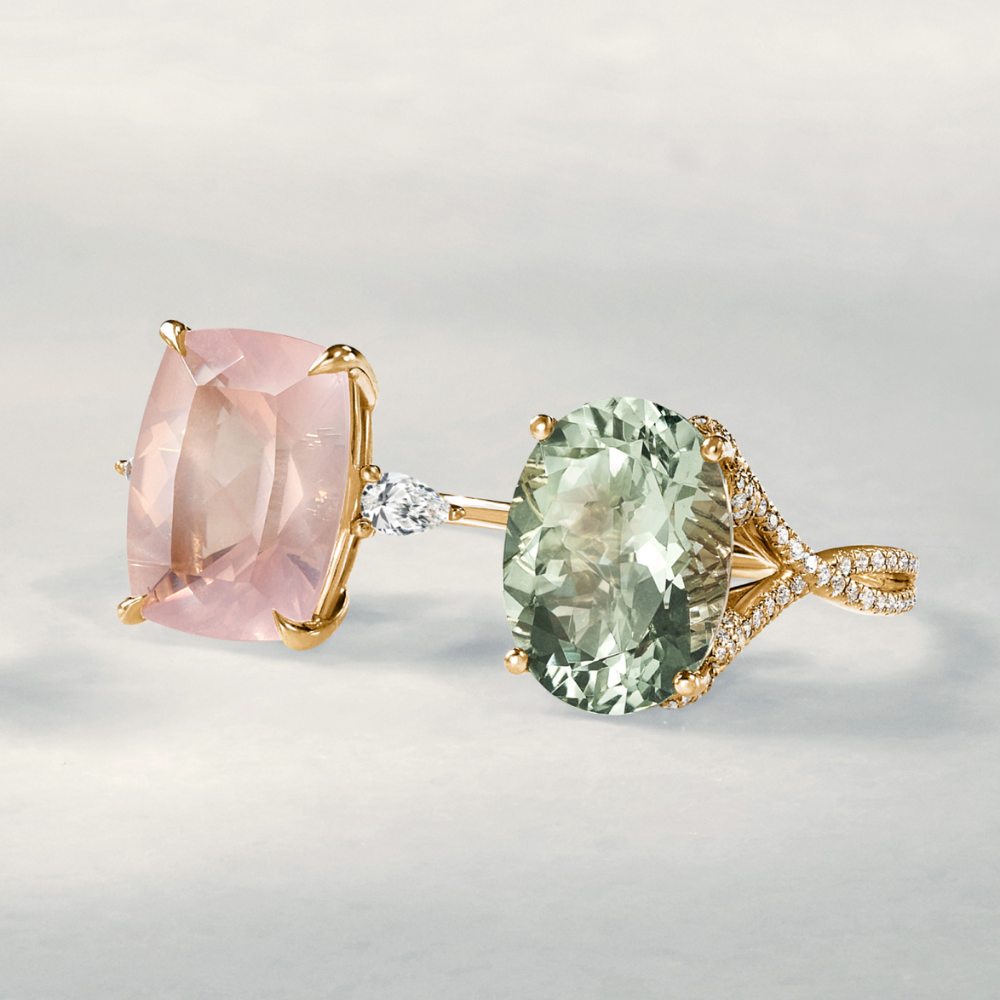Birthstones are gems associated with each month that offer personal significance and a connection to history, culture, and symbolism. While some birthstones are commonly available, others are much rarer.
Rarest Birthstone
The rarest birthstone is natural alexandrite, one of June’s birthstones. Renowned for its extraordinary color-changing property, alexandrite shifts from green in daylight and iridescent light to reddish-purple under incandescent light. This unique optical feature is caused by the presence of chromium in its crystal structure.
Alexandrite’s rarity arises from the geological requirements for its formation. It is only found in a few locations globally, including Brazil and Sri Lanka. High-quality versions are especially scarce, making it one of the most coveted gems in the world.
Rarest Birthstone List
1. Alexandrite (June)
Alexandrite is widely regarded as the rarest birthstone due to its remarkable color-changing properties. The gemstone shifts from green in daylight to red under incandescent light. High-quality alexandrite is extremely rare and is mostly found in Russia, Brazil, and Sri Lanka.
2. Ruby (July)
Rubies with intense, vivid red color are very rare and highly valued. Rubies from Myanmar are especially sought after, although they are also found in places like Mozambique and Thailand.
3. Emerald (May)
Emeralds with rich green color and minimal inclusions are considered highly rare. The finest emeralds, particularly those from Colombia, are the most coveted, though emeralds are also found in Zambia, among other locations.
4. Diamond (April)
Diamonds are found globally and are not rare in general, but diamonds of the highest quality (with exceptional cut, clarity, color, and carat weight) are rare and are highly valued.
5. Tanzanite (December)
Natural tanzanite is a gemstone that is only found in one small region near Mount Kilimanjaro in Tanzania. Its vibrant blue-violet color and rarity in larger sizes make it one of the most prized and rare gemstones available today.
6. Aquamarine (March)
While aquamarine is relatively common, stones with deep, vivid blue colors are rare. The best-quality aquamarine is mostly sourced from Brazil, although there are other sources as well.
7. Pearl (June)
Natural pearls are incredibly rare, particularly those formed without human intervention. Cultured pearls, produced by mollusks with human intervention, are somewhat more common, though high-quality pearls that are uniform in color, size, and shape are difficult to find.
8. Opal (October)
Opals, especially black opals, are among the rarest and most valuable. The play-of-color seen in high-quality opals makes them one of the most captivating gemstones, though they are not as commonly found as others.
9. Sapphire (September)
Sapphires come in many colors, but certain color varieties, particularly the rare “padparadscha” sapphire (a pink-orange hybrid), are highly prized.
10. Spinel (August)
Spinel is often mistaken for ruby due to its similar appearance, and the red spinel, in particular, is very rare and valuable.
11. Garnet (January)
Garnet is typically available in a wide range of colors, but the rare demantoid garnet is one of the rarest varieties, known for its vibrant green color and exceptional brilliance. Demantoid garnet is highly sought after and found in smaller quantities.
12. Peridot (August)
Peridot is rare in larger sizes, particularly those exceeding 10 carats, as it remains relatively rare in large sizes.
13. Tourmaline (October)
Tourmaline is available in a wide variety of colors, but the Paraiba tourmaline, with its vivid neon blue-green color, is particularly rare. Other rare varieties, such as rubellite (red tourmaline), are also highly sought after for their unique colors.
14. Sardonyx (August)
Sardonyx, a type of onyx that displays distinctive color bands, is relatively rare when it has sharp, well-defined bands. It is not as rare as some other gemstones, but the highest-quality sardonyx is valued.
15. Citrine (November)
While citrine is relatively common, natural citrine that hasn’t been heat-treated is much rarer. The majority of citrine on the market is heat-treated amethyst, but naturally occurring citrine is harder to find and more valuable.
16. Topaz (November)
The rarest variety of topaz is imperial topaz, with its rich golden-orange color. Blue topaz, which is more common, is generally heat-treated and irradiated, but natural blue topaz is considered rare and valuable.
17. Zircon (December)
Zircon, especially in its blue form, is rare and highly valued for its brilliance and fire. This gemstone is found in various locations, including Cambodia, Sri Lanka, and Thailand.
18. Turquoise (December)
Turquoise is valued for its smooth, blue-green color, but high-quality turquoise with a bright, even color is rare.
19. Blue Topaz (December)
Blue topaz is commonly found. Most blue topaz on the market is heat-treated and irradiated to enhance its color, making natural blue topaz stones highly sought after and rare.
20. Amethyst (February)
Amethyst is generally abundant and available in many sizes, but the finest deep purple amethysts with little to no inclusions are considered rare. Larger, top-quality amethyst stones, particularly those with deep, vivid color, are highly prized in the market.
Among all the beautiful and symbolic birthstones, natural alexandrite emerges as the rarest, with its fascinating color-changing ability and limited availability. Whether you’re considering a rare and unique birthstone for a special occasion or simply exploring the world of gemstones, understanding their rarity adds depth to your appreciation.
Still interested in learning more about birthstones? Check out our other Birthstone Guides: Birthstone Chart, Birthstone Colors, Birthstone Meanings, Zodiac Birthstones, Most Expensive Birthstones, Rarest Birthstones, January Birthstone, February Birthstone, March Birthstone, April Birthstone, May Birthstone, June Birthstone, July Birthstone, August Birthstone, September Birthstone, October Birthstone, November Birthstone, December Birthstone, Alexandrite Guide, Aquamarine Guide, Emerald Guide, Garnet Guide, Pearl Guide, Sapphire Guide, Topaz Guide







